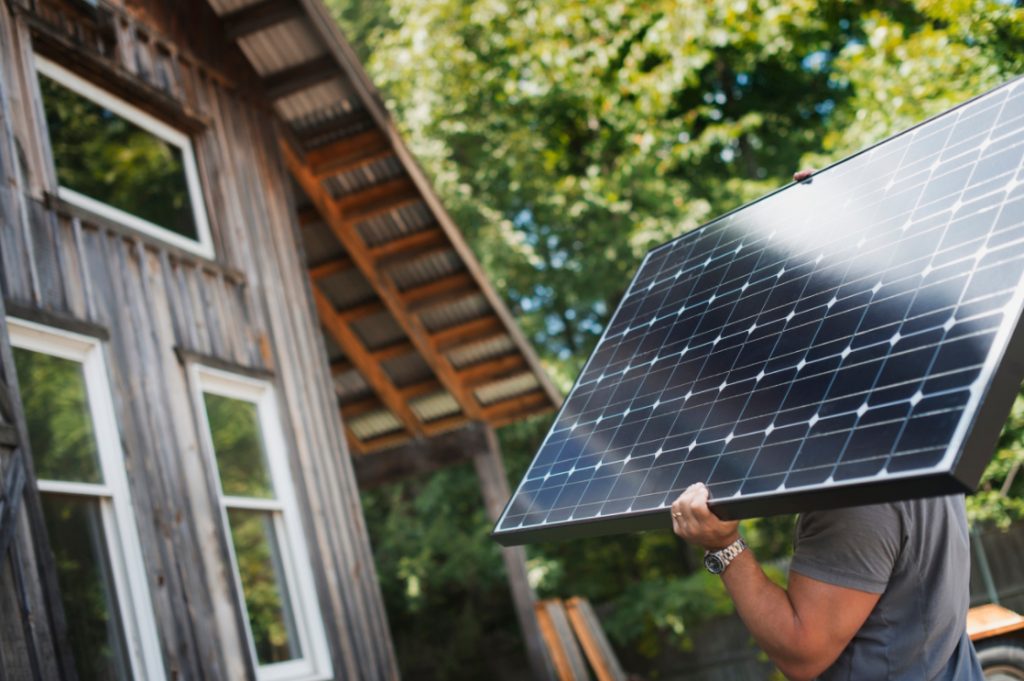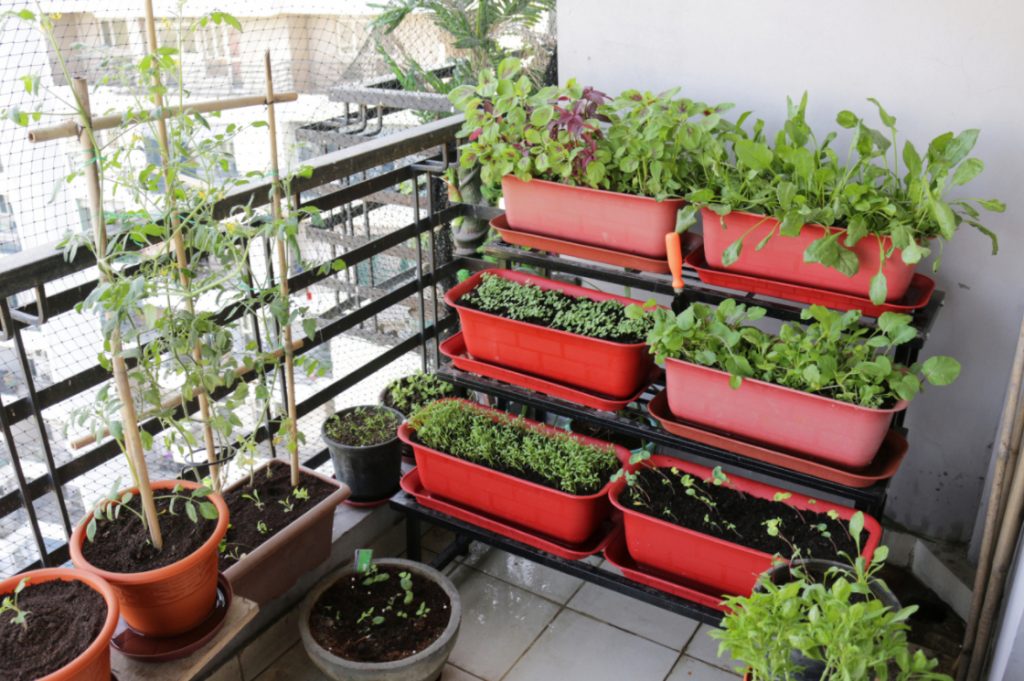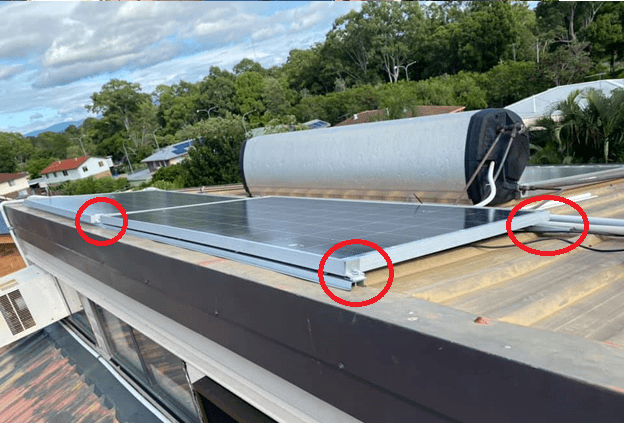The Ultimate Guide to SAVE MONEY: 52 ways to start saving money today!
Saving money is the key to achieving your goals and improve your lifestyle. Read our detailed article and find out 52 ways to save money: from your energy bill, from your money management skills, and from your lifestyle.

Save money on your energy bills
Many people find themselves in a situation where they can’t save any money because of the bills they have to face. Australian statistics show that electricity consumption can represent 10% of the expenses of low income households. This can sometimes be a vicious cycle for households struggling with their finances since they will often be constrained to live in houses and use appliances that are not energy efficient.
Below are a few things you can do to save money on your energy bills. You can choose to use this extra money directly, but we would suggest that you select your average energy bill amount and once you start saving electricity and having lower bills, put the difference into your savings. This way, all of your efforts towards energy savings will have a more tangible impact on your finances and you might be able to say at the end of the year “I’m paying this holiday entirely with money I saved from my energy bills!”
- Check the seals on your windows and doors
- Shut doors and close curtains
- Give your thermostat a nudge.
- Service your air conditioner.
- Adjust your fridge and freezer temperature.
- Don’t wash clothes in hot water.
- Don’t dry your clothes with a clothes dryer
- Adjust the temperature on your water heater.
- Purchase energy-efficient appliances.
- Swap out your lightbulbs.
- Install dimmer switches.
- Use smart power strips.
- Invest in a solar power system
- Plan your energy consumption around solar
- Be energy efficient with your cooking.
- Be energy smart with your dishwasher.
1. Check the seals on your windows and doors, and your fridge and freezer
Make sure the seals on your windows and doors are in good condition and no air is leaking out, so the air you have paid to heat or cool doesn’t just escape and you don’t literally throw money out of your window… If a door or window is not well sealed, you can buy very inexpensive sealing strips from places like Bunnings that are very easy to install even if you are renting. You just cut them to the needed length and they stick to the inside of the door frame or window frame and will do a great job at blocking air leaks -and creepy crawlies as a bonus!
Doors that lead outside, to the backyard or to your garage would also benefit a lot from having a draft stopper against the bottom of the door. If you want more information on this subject, look up “weather stripping door / window” on google or YouTube. It’s easier than you think and will save you a lot in the long run!
Likewise, check the rubber seals of your fridge and freezer doors. Keeping these clean will ensure they work properly and no cold air is leaking out of your fridge or freezer, which would make it work harder (costing you more electricity and shortening the life of your costly appliance). If your fridge or freezer is older or the rubber seals are damaged or worn out, you can replace them easily. Many companies online sell rubber seals for various brands of appliances.
2. Shut doors and close curtains
When heating or cooling your home, make sure to close the doors to the rooms you are not using so you’re not wasting money by cooling or heating an empty room.
Windows are usually the weakest part of the insulation of your house, since they are a lot thinner than your walls.
During the coldest parts of the year -or even of the day, such as at night and early morning- make sure to have all of your curtains down to add some insulation. It may seem like a curtain won’t insulate much but it works! The air trapped between the window and the curtain will act like a buffer between the inside and the outside temperatures and provide insulation.
Same goes for the very hot times of the year, or the times of the day when the sun might be directly heating your windows (early in the morning, or later in the evening). The curtains will provide insulation and will stop the sun rays from turning your house into a sunroom! A good option for the houses in warmer climates is to have external shading around your windows, such as external blinds or canvas awnings, because they will block the sun while providing natural daylight to the home. You now understand why so many traditional houses in Queensland have these verandas that go around the entire house!
Make sure to be balanced with this. Keeping your house constantly in the dark will affect your mood, kill your beautiful plants and potentially encourage germs, bacteria and mould to thrive. The key is to pick what time of the day the house should be in the dark and what times of the day not!
3. Give your thermostat a nudge.
Experiment with the temperature settings on your air conditioner and heater to see what temperatures can be reasonably comfortable for you and your family. Even just one degree up or down can reduce the appliance’s energy drastically. Every degree will save you between 5% and 10% of energy consumption depending on the appliance. That’s a huge saving at the end of the year! So see how comfortable you can be, try wearing a jumper or having a warm blanket on the couch. Or in summer, use cold drinks and fans to limit the need for the A/C to be blasting cold air.
Question: Does leaving the Air Conditioner on all the time save money in the long run?
No! The idea that it’s better to leave the A/C on all the time, even when you’re not at home will end up saving you money because the unit won’t have to work as hard is a big misconception. In reality, A/C units are the most efficient when they are running at full speed. Fluctuating to accommodate for a constant temperature is far more taxing on an air conditioner than when it’s working at full capacity. Air conditioners work best when they are operating in full gear, so running them for the whole day will also damage them, since they’re not built to run constantly. Use them only when needed, at a temperature setting that is acceptable for you and your family.
Please note: For those of you that have pets at home when you’re out of the house, keep in mind their needs. Turning the A/C completely off on a very hot day could put the life of your pets at risk! A good compromise is to close as many rooms as possible in the house so your cat, bird, or dog can be at a comfortable temperature without needing to cool down areas of the home where they don’t need to be. Oh, and close the curtains! 🙂
4. Service your air conditioner.
Your air conditioner or split system needs to be serviced regularly to continue operating properly. With no servicing, the machine will have to work harder, costing you more money. And it will also die much sooner. You can pay for someone to come and service your units for you (it’s often recommended to do so twice a year: before summer and before winter). You can also do much of the servicing yourself, since it’s actually pretty easy! Most A/C units servicing will mainly consist of 2 steps. First, clean the air filter of the indoor unit. They are very easy to take out, you can just rinse them with your shower head and let them air dry for a few hours before putting them back in the machine. The outside unit also needs to be cleaned. A screwdriver is sometimes needed, and a dustpan or vacuum cleaner is all you’ll need. You’ll be looking for dead bugs, leaves, and small twigs that could be trapped inside.
Other aspects of the servicing like oiling the motor can be a bit more complicated. If you’re handy, a quick search on youtube will give you all the DIY knowledge you need. If not, it might be worth getting your units professionally serviced once in a while on top of the maintenance you do yourself.
5. Adjust your fridge and freezer temperature.
Your fridge and freezer can be set to much colder temperatures than you actually need to keep your food fresh. The required temperature to ensure your food stays fresh in your fridge is 4 or 5 degrees Celsius, and in your freezer is -15 to -18 degrees. Because your fridge and freezer is such a big appliance and runs all the time, it’s actually one of the most expensive machines in your home.
If your fridge and freezer only have the “low-medium-high” settings, you could use a thermometer left inside for 30 minutes to fine-tune your settings and be as efficient as possible!
Keeping these appliances clean and with a good enough space around them for air flow will also help them to run as efficiently as possible.
6. Don’t wash clothes in hot water.
You can save around $115 a year simply by washing your clothes in cold water.
Hot water is only really needed for really bad stains, and doing it all the time could actually damage your clothes. Even with water saving options on some machines, it’s usually better to use your machine only when it’s full rather than doing multiple smaller loads of washing.
7. Don’t dry your clothes with a clothes dryer.
Clothes dryers use a lot of energy. The most common vented dryers can cost you around $650 each year in energy! Hang your clothes outside in the sun or inside with a fan and you’ll make considerable savings. Clothes dryers are also very harsh on your clothes and will cause damage, making you need new clothes sooner.
8. Adjust the temperature on your water heater.
Under Australian law, hot water systems must be set to a minimum temperature of 70 degrees celsius, which is hot enough to kill harmful bacteria and keep an ideal operating temperature for the system. However, many houses have this set to higher temperatures.
Have a look at your system and make sure it’s set to 70 and not more, and you’ll save money instantly!
9. Purchase energy-efficient appliances.
If you’re going to buy a new dishwasher, washing machine, water heater, fridge or freezer, look for an energy efficient model. They cost more upfront but will save you money in the long run! If you can’t afford to have all of your appliances be of a higher end, prioritise the ones that run the most: fridge, A/C, water heater…
10. Swap out your lightbulbs.
You can reduce your energy costs associated with lighting by a whooping 80% simply by swapping your light bulbs for LED bulbs. They use a lot less power and last longer!
11. Install dimmer switches.
Dimmer switches allow you to adjust the brightness of your lights and reduce the amount of energy they consume. For example, if you lower the brightness of your lights in the evening by 30% to set a mood, then you’re also reducing your energy consumption by 30%. If you are in a rental and can’t install a dimmer switch, consider getting some decorative lights that have a dimmer switch integrated into the on/off button!
12. Use smart power strips.
Try this little experiment: turn off the lights in your house, and look for little red eyes staring at you. All of those glowing LEDs are devices and appliances that you have switched off, but stay in “stand by”. They are generally but not always appliances that work with a remote and need to stay on to wait for your input. But while they wait for hours or days for your next input, they consume energy and cost you money.
13. Invest in a solar power system

Instead of paying an energy company for the next 3-5 years (and forever), you could pay the same amount of money (or less) towards a loan to get a solar system installed that will cover your energy needs. Swapping your energy bill for a solar loan is a great idea because once the solar system is paid for after a few years, you’ll own your own energy production and the amount of money you’ll need to pay for electricity from the grid will be reduced to an amount so small it can be dismissed, a whooping $0, or even a credit!
This is very attractive because it’s a very simple and affordable investment that benefits from government rebates paying for up to 30% of the system, and allows you to have control over your energy costs rather than depend on big energy companies who have been raising their cost every year…
Try our solar savings calculator
14. Run away from cheap solar
There are many solar companies out there who will try to sell you a solar system for a very small and attractive price. This is a practice that has been going on for a long time in Australia and many Aussies have fallen for it (click here to see the difference between a good quality and poor quality installation). What’s the problem with cheap solar? It’s not actually sustainable for solar companies. All they do is sell very cheap, sell a lot, without caring about the quality of the products or the quality of the installation (even though they’ll swear the contrary) and then 5 years later when the whole solar system starts to fall apart, they are nowhere to be found! Over 83% of solar companies approved by the Clean Energy Council from 8 years ago have since closed and disappeared, and so did all of their warranties. So rather than focusing too much on prices, focus on how reliable and trustworthy the company is. There are some very respectable solar companies out there that have been in the business for a long time and provide long-lasting, reliable customer service. GI Energy is one of them. Do your research: if a company is offering a price that looks too good to be true, doing a simple ABN search to see how long they’ve been in business will help you sift the respectable from the cowboys of the solar industry. At GI Energy, we’re proud to be in our 10th of service (since 2011) which makes us one of the oldest solar companies in Australia.
15. Plan your energy consumption around solar
Once you have a solar system of your own, you need to understand that you’re only producing energy when the sun is up. In the evening and at night, you won’t be producing your own power and will be buying your electricity from the grid. So get in the habit to do your loads of washing, dishwashing and other things such as cooking large meals or ironing during the day rather than in the evening. It’s a great way to save money because you’ll be doing these power hungry chores with free energy! Many appliances such as washing machines can be programmed to run at a time you set.
Even if you don’t own a solar system yet, running these appliances in the middle of the day will end up a bit cheaper because energy has a different cost if it’s in peak hour or not.
16. Be energy efficient with your cooking.
Cooking appliances consume significant amounts of energy. There’s a few very simple things that you can do to reduce the energy you need for your everyday cooking. For example, if you know you’re going to use frozen goods for your evening dinner, put them in the fridge in the morning to thaw out. They’ll cook faster later and save you energy!
When cooking, use the microwave anytime you can as it consumes a lot less energy than other cooking appliances such as an electric oven.
When using a stove, keep lids on the pots to reduce the cooking time.
Another great habit to reduce the energy needed for cooking is to cook larger meals and have leftovers to put in the microwave the next day! Or better, meal prep and keep ready meals in the freezer.
17. Be energy smart with your dishwasher.
Only run your dishwasher when it’s full. When using it, as long as you’ve rinsed off your dishes before loading them in the dishwasher, you can stick to the economy cycle of the machine and it will be fine!
Save money by managing it better

- Know where your money is going
- Create different spending budgets
- Pay yourself (your savings) first
- Round up your expenses
- Pay off some debt
- Make saving fun
- Pay your bills on time
- Review your insurance
- Update your mobile plan
- Get a bonus interest rate on your savings
- Be tax organised
- Have your own tax return
- Register your family on the Medicare Safety net
- Review your subscriptions services
- Participate in surveys for cash
Disclaimer: The information below is general in nature and should not be considered direct financial advice. You should always check these tips with a qualified financial planner who knows your specific situation and can offer tailored advice. Because this advice is very general you should use it as a guide only. We are solar energy experts at GI Energy so anything energy related we will hang our hat on and stand by 100%. The rest of these tips are a combination of our office staff ideas to try and help our readers.
1. Know where your money is going
First things first, you need to find out what your expenses are. You can keep a spending journal for a few weeks or grab your last bank statement and write down your expenses for the last month. When doing so, you could set up different categories of spending such as rent/mortgage, utilities, transport related expenses (fuel, toll fees, public transport), groceries, eating out, etcetera.
If you’re trying to write down how much money is being spent per month, keep in mind that there are some expenses that do not come as often but you should consider.
For example, you could take the cost of your 12 months car registration and car insurance and average them to a monthly cost. Car servicing can vary from $220 to $550. Check how much your last service was and how many times per year you need it, then you can calculate your monthly cost. Have pets? Consider the cost of vet visits and vaccinations for a 12 months period… School fees? Visits to the dentist every 6 months? Need new glasses every year? You get the idea.
2. Create different spending budgets
Now that you have analysed your expenses, create budgets and stick to them. Having a set amount of money to spend on groceries or on eating out can help you control your spending better while still having some money to buy products you really enjoy or to have fun. Forget about the sad experience of running out of money before the next pay check, or getting to the end of the month and wondering “where did my money go?”.
If you struggle to stick to your budget, a technique that has proved to be very effective is to withdraw the money from your bank account when you get paid, and put your cash in different envelopes. One envelope for groceries, one for eating out, and so on. Visualising your money will make it a lot easier to stick to your budgets!
3. Pay yourself (your savings) first
When you spent time looking at your expenses and setting budgets, you probably found a certain amount of money that won’t be spent and can be saved instead. Immediately after getting paid, transfer this exact amount to your savings account. That way, it won’t be as easy to spend money you should be saving.
Also, remember all of those bigger expenses that you’ve divided into monthly costs? Transfer all of that into your savings too. You’ll experience an amazing feeling when you get to those normally painful expenses and already have all the money saved up for them. No more eating pasta for a month because you had to pay your rego!
4. Round up expenses
There are a few apps out there that connect to your bank account and round up every purchase you make to put them into your savings. Some banking apps have this feature built into them. How exactly does it work? Say you spent $14.44 at a café. The app will turn this expenses into $15, and allocate the spare change ($0.56) into your savings. You’ll be filling up your savings account without really noticing anything, but after a few months it can add up to some sweet savings!
Some apps also allow you to “boost” your round ups, by taking the spare change and an additional amount, all the way to $10. In the example of the $14.44 spent at the café, you can choose to save $0.56 + 1,2,3 all the way to $10! Take it as an additional tax you pay to yourself. Find an amount that works for you, being big enough to make you save faster but little enough so you don’t really notice the round ups.
If you’re using the envelope system and paying in cash, put your spare change in a jar that can’t be opened and you’re set!
5. Pay off some debt
If you carry any kind of debt, consider using all or some of your savings of the month towards making additional repayments on your debt. Paying it off sooner will make you save a lot of money from interest charges! For example, you could “pay yourself first” for your savings, but use the money saved in rounding up expenses to make additional debt repayments every month.

6. Make saving money fun
Saving more money doesn’t have to feel like a chore. There are plenty of ways to “gamify” your saving endeavours and make it more fun. You could compete with someone in your family or a friend. Or you could participate in one of the many saving challenges popular online. Below are some of the most popular ones:
The 52 Weeks Challenge
There’s 52 weeks in a year. This challenge makes you save $1 on the first week, then $2, then $3, all the way to $52, to reach a total at the end of the year of $1,378. You can randomly choose which amount you’ll save out of the 52 options by printing it out and ticking a box each week, or you can set a different amount if you want to make it a little harder but save a lot more. For example, you could start at $21, then $22 etcetera (for a total at the end of the year of $2,418)
The No Spend Challenge
Pick a certain amount of time: one day of the week, one week in the month or in the quarter, one month in the year… and do not spend any money during this time. Of course you’ll still be incurring expenses using water and electricity, but you won’t be buying anything from the grocery store, you won’t be making any online purchases on amazon, and you won’t spend money going out (enjoy the park, free museums and libraries instead!). Having to buy your groceries in advance in bulk and sticking to whatever is in your pantry and freezer can be a very good exercise. And staying away from some habits or hobbies that cost you money for a while might make you discover new things to do that don’t cost any money!
Weather savings challenge
This only works if you don’t live somewhere that is cold for most of the year. Pick a day of the week, and every week on that day put in your savings account whatever number is the highest temperature of the day where you live. This completely randomizes the amount you’ll put towards your savings every week (while keeping it fairly under control since the temperatures won’t go up a number that is too hard to save). Because you don’t know exactly the amount of money you’ll have to save, you need to keep an eye on your spending to be ready for it. And if you go through a depressing week of cold weather and rain, you’ll have the comfort of having a bit of extra cash to spend for hot chocolates since you’ll put less into your savings.
This idea can be applied to whatever works for you. Count the time it takes you to do your daily run around the park, and save the highest number of the week. Save the score of your favorite footy team. Save $2 for every hour you spend watching Netflix. Choose whatever works for you, and turn it into a savings game!
7. Pay your bills on time and save money
With money management issues often comes late payment fees on bills. You can avoid these (and save money) by paying your bills on time. It could be as simple as putting a reminder in your calendar when a bill is due.
You could average your energy or water bill and save the corresponding amount every week, so when the bill comes you already have most of the funds needed to pay it.
Another great way to never worry about your bills is to set up a regular payment every week into your account so that your bills come with a $0 owing -or some money in credit!
8. Review your insurance
It could be a good idea to review your car insurance to make sure you’re having a competitive price. Insurance costs can vary greatly, and sometimes giving a phone call to your insurance company to ask for a better price is all it takes for you to get a better deal (and for them to keep a customer).
Reviewing your health insurance can also be a very valuable thing to do. Are there some premiums that you don’t need and could drop? Or, if you plan to save some money as an emergency fund, would you be in a position to adjust your excess and save money this way? Money set aside for emergencies will actually give you interest while it sits there, so it’s a better option than paying a higher fee to your insurance company.
Are you paying for life insurance, total permanent disability insurance, trauma insurance or income protection insurance? Some of these can be covered by your superannuation fund. It might be worth it for you to investigate if it’s better to pay for these separately or have them be included in your super.
9. Update your mobile plan
Phone plans change all the time, and there’s a lot of them available. Avoid locking yourself into a 24 months contract, and get in the habit of comparing your existing plan to the ones other providers offer. If you find a better deal, you could call your company to ask them to match it, or simply change your plan to a better and cheaper one.
10. Get a bonus interest rate on your savings
Many savings accounts offer a bonus interest rate if you meet their criteria, like making a minimum monthly deposit, not making withdrawals, or having a certain amount of transactions on your spending account. Look it up, and consider changing to a different savings account that offers a better interest rate. Oftentimes, online banks will offer better interest rates because they don’t need to spend money on having physical bank branches for customers to visit.
11. Be tax organised and save more money
Learn more about what expenses you could be deducting from tax, and get in the habit of filing your tax receipts as soon as you get them to have the best tax return possible. There’s a few apps that can help you, one of which is directly made by the ATO called myDeductions.
12. Have your own tax return
Something that can be both fun and highly rewarding is to save some money and consider it a tax you pay to yourself. Put some money in your savings every week, and keep it in your savings until you get your tax return. If you need to pay any tax, you have the funds for it. If you get a tax return, then use your saved money as a bonus tax return to use for yourself: go on a holiday, buy a new phone… whatever you want! If you like technology or video games, you could for example have a Black Friday fund and have a nice amount of money to spend on electronics and games every year on black Friday. Or if you like clothes shopping, you could have a Boxing Day fund. You get the idea.
13. Register your family on the Medicare Safety Net
Check if you’re eligible for the Medicare Safety Net., having you and your partner on the same Medicare card rather than as 2 separate individuals. This will reduce your Medicare threshold and if your out-of-pocket expenses for expenses that are “Medicare-claimable” go above that threshold, you’ll get refunds from Medicare at a higher rate.
14. Review your subscription services
Apple music, Spotify, Netflix, Stan, Disney +, Amazon Prime, Hulu, Audible… Are you currently paying for one of those services but not really using it that much anymore? Take the 2 minutes needed to cancel your subscription and save a lot of money in the long run. When talking about TV streaming services, it might be a good idea to only get one of them at a time. When you run out of things to watch on Netflix, get Disney + instead, then get Amazon Prime, then get Stan. It will keep your binge watching needs happy and by the time you get back to Netflix, there will be a lot of new movies and shows to watch!
15. Participate in surveys for cash
There are a lot of apps and websites that allow you to participate in online surveys for a little bit of cash. It’s a habit that might take 1 or 2 minutes each day but generate a nice amount of extra money. Just make sure to stick to the platforms that have a good reputation, because there are a lot of scams out there…
If you use an android phone, you can get the Google Rewards app. You’ll get one or two notifications on your phone each day for a new survey that’s available. They usually take less than 10 seconds to complete and each of them rewards you with $0.10 to $0.80 every time on your google play credit. It’s a habit that will allow you to buy a few mobile games or premium apps every year without any of your own money!
Save money on your lifestyle
- Avoid emotional spending
- Shop once a week with a shopping list
- Compare the price per weight of food
- Bring your bags to the shops
- Meal prep
- Stop wasting food
- Make your own coffee
- Have more vegetarian meals
- Use frozen vegetables
- Get fuel discounts
- Take care of your car
- Convert prices into hours of work
- Go to the library
- Find a better hobby
- Shop out of season
- Freeze food
- Propagate plants
- Grow your own vegetables
- Limit eating out
- Change your spending habits
- Cut down on alcohol
1. Avoid emotional spending
Emotional spending, sometimes called impulse buying or retail therapy is what you do when you buy something simply to change your mood. It may not seem like a lot at first, but two $15 impulse buys per week will amount to $1,560 per year. Do you grab that overpriced chocolate bar when you’re going through the register? Buy random things on your phone late at night and forget about them until you receive them a few weeks later?
That’s emotional spending. We all do it to some extent, but making efforts to reduce it or keep it under control can help to save considerable amounts of money. One common technique is to count to 10. Feel the urge to buy something, or throw something in the shopping cart? Count to 10 in your head, this could be all you need to realise that you don’t actually need this item and save some money.
2. Shop once a week with a shopping list
Doing a lot of small grocery shopping trips through the week will expose you to more opportunities to buy things you don’t need. Try planning ahead and writing down a shopping list, then getting a big shop but only buying what’s on your list. Writing a menu for your week and the list of ingredients needed can be a great thing to do to avoid buying take away food. If you have all the ingredients to prepare a meal you really enjoy, takeaway will be less tempting!
3. Compare the price per weight of food
Price tags can be misleading when buying food. Many foods are packaged in larger and smaller quantities, and while it may at first seem like the smaller item is cheaper, it’s often more expensive when comparing the price per weight. The same goes when comparing different brands of food. The brand that seems to be cheaper is often more expensive in price per weight. Even items that are sometimes on sale, such as “2 for $$” are often still more expensive per weight than the bigger version not on sale. Get in the habit to check the smaller price on the tag indicating the cost per 100mg or cost per 100ml. In the long run, you’ll save huge amounts of money (and have the satisfaction to know you’re not being fooled by evil marketing tactics).
4. Meal prep
Meal prepping is the practice to cook a few large meals and put them in individual containers for easy meals on the go. It can save you a lot of time and money by helping you to always have meals ready to be microwaved so you don’t need to eat out and can eat something that you enjoy and that is healthy. 2 or 3 cooking sessions per month can be enough to provide you with great meals for the whole month! Did you know that Australians spend on average 34% of their food budget on eating out? That’s $1,600 per year!
The other benefit of having a few big cooking sessions through the month is that for the rest of the month, you won’t be using your cooking appliances that consume the most energy (electric oven, stove…) nearly as much!
5. Stop wasting food
Be more conscious of the food that is sitting in your fridge or in your pantry, and do what you can to eat it before it goes bad. Australians throw away the equivalent of every 1 in 5 bags of groceries every year. That’s a fifth of your groceries budget that is completely lost!
6. Make your own coffee to save money
Buying a $5 coffee on your way to work will add up to $1,300 per year. Depending on how many fixes you need through the day, this could make a huge hole in your wallet.
Someone who gets three $5 coffees through the day will spend almost $4,000 at the end of the year… You can buy a lot of things with this money! So consider making your coffee at home, or buying a good coffee machine (it will pay for itself really quickly).
7. Have more vegetarian meals
Consider having more vegetarian meals throughout the week, or not having meat for a day each week. Swapping a 500g pack of beef mince (which is a pretty inexpensive meat option at around $8 in most major supermarkets) for your tacos with 2 cans of beans at around $1 each could save you $6 on just one meal. Do this just once per week and you’ll save $312 per year! Having just a few vegetarian meals throughout the week can help you save a lot of money.
8. Use frozen vegetables
When buying vegetables, consider getting frozen vegetables. They are often cheaper than the fresh option, have a much longer shelf life and have just as many vitamins and nutrients as the fresh ones.
9. Get fuel discounts
You can get a discount of 4c per litre at Caltex if you spend more than $30 at Woolworths. Coles does something similar. You can earn rewards points when buying your fuel too that you’ll be able to redeem during your next grocery shopping trip. Taking advantage of these discounts can significantly reduce your car expenses. There are also apps you can use that will tell you all of the different fuel prices available in your area, helping you to save more money.
10. Take care of your car to save money in the long run

Taking good care of your car will make it last longer, perform better and need less repairs. Make sure to clean the air filters often, check the fuel at least once a week and change it when needed, and inflate your tires every month to use less fuel when driving.
11. Convert prices into hours of work
If you want to buy something online such as clothing or some electronics, convert the price into how much time you would need to work to earn the amount it costs. If what’s in your basket on amazon costs an equivalent of 2.5 hours of work, leave it in your cart for this amount of time and come back to it once this time has elapsed. It will help you avoid impulse buying and help you to appreciate better the value of the things you buy.
12. Find a better hobby
Is your hobby quite expensive? Consider experimenting with other activities to see if you could enjoy a different hobby. Some of these could be completely free, or even make you money! Learning a skill can not only be a great hobby but also a great source of additional income. Try things out and see if you like something else!
13. Shop out of season
Buy your summer clothes in winter and your winter clothes in summer, buying items from the previous season. You’ll save a lot of money doing this!
14. Freeze food
Freezing your leftovers and eating them later can be a great way to reduce food waste and save money. You can also buy food items that are reduced because they are close to their expiration date and put them straight in the freezer. This works really well to reduce the cost of meat. Once you’re ready to eat them, just take them out of the freezer in the morning and cook them on the day.
15. Propagate plants
If you’re someone who enjoys house plants, consider propagating the ones you already own instead of buying new ones. It’s a relatively easy process and you could have new plants for free. You can also sell your propagated plants to your friends or on your neighbours on Facebook Marketplace and Gumtree once they are well established and make a bit of extra cash to go towards the next plant you’ll buy to add to your collection!
16. Grow your own vegetables

Speak about hobbies that will save you money: gardening and having a veggie patch (even a very small one) is an activity that can make you save a lot of money by growing your own fresh vegetables instead of having to buy them. Home grown veggies often taste a lot better than store bought ones, but that could be because of the joy and pride of knowing you’re eating the fruit of your hard work… Give it a go!
17. Buy second hand to save money
Before buying a brand new item, consider buying it second-hand on websites like Gumtree or Facebook Marketplace. You could save a lot of money getting something that is still in perfect condition from someone who doesn’t need it anymore (or who was guilty of emotional spending and now realises they don’t actually need the item). Just be careful when browsing through these platforms to not fall into the trap of impulse buying yourself. You may see a real bargain available for an item that you don’t need at all but still feel like it’s too good not to buy. Caution…
18. Go smaller instead of bigger
It’s a very common marketing practice to make consumers spend a little bit more to get a slightly bigger version of the same thing. Spend 1 more dollar to upgrade to a large meal at McDonalds, or to get a large coffee at your favourite coffee shop…
While the additional cost doesn’t seem like much, it’s the same principle as the “cost per weight”. When you consider the actual amount of additional food/drink you’re getting, it’s not worth it.
Instead, get in the habit of getting a small meal or a small coffee. You’ll still enjoy it, and you’ll save a lot of money. For example, getting a small coffee instead of a large one could save you $260 per year!
19. Cut down on alcohol and save money
Alcohol is very expensive, especially in Australia. We can’t say it better than Hello sunday morning:
Consider a couple who are regular wine drinkers, with perhaps the odd beer thrown in. They’re set in their ways, and let’s say they share a bottle of wine most weeknights, plus a bit more over the weekends. That leaves them drinking their way through 8 bottles per week between them. They’re a bit choosy about what they drink, but not obsessed, so we’ll assume they average out at $20 per bottle. That comes to $160 each week, or $8,320 in a year. That gets a nudge upwards from peak-season holiday drinking, and the odd bottle of spirits or case of beer, so it would be easy for this couple to pass the $10,000 per year threshold. Changing the amount they drink can be the equivalent of a significant pay rise.

Other helpful links worth checking out:













